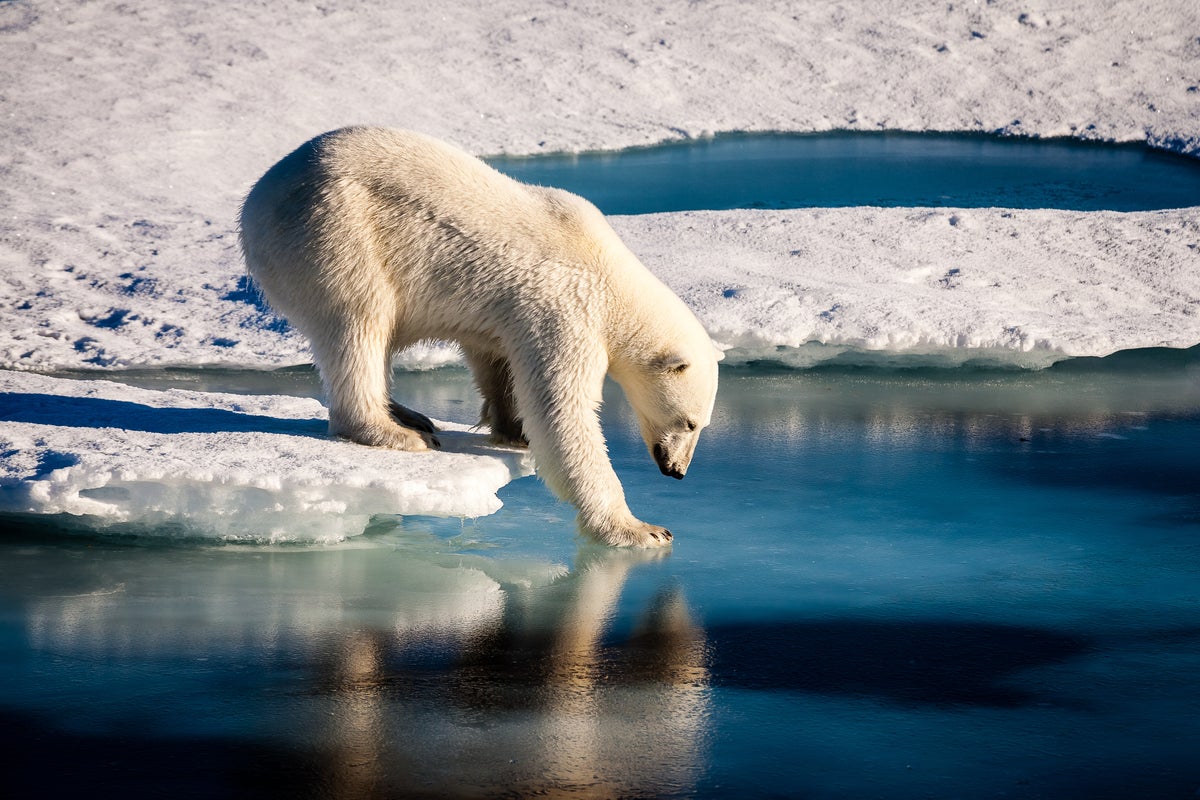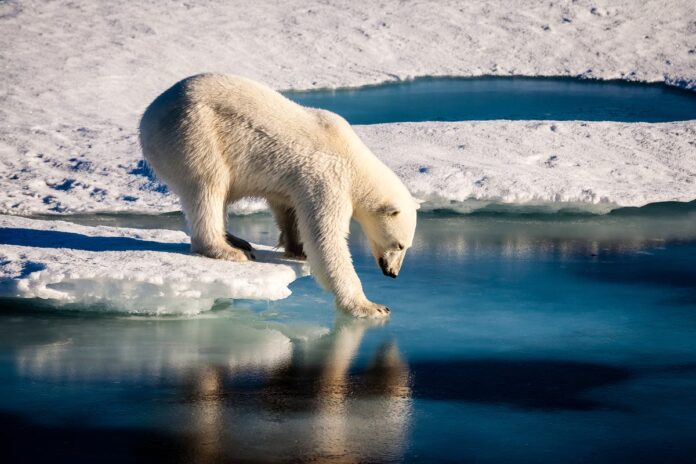[ad_1]

A group of polar bears appear to have adapted to the climate crisis after an isolated population was discovered in southeast Greenland, despite a lack of sea ice for most of the year.
Researchers located the polar bears in the fjords of southeast Greenland, which is surrounded by mountains and an ice sheet to the west and ocean to the east. As the region is so far south, sea ice coverage lasts for only around 100 days each year.
The discovery has led scientists to believe that some polar bears – who typically need sea ice to survive and hunt – could survive the loss of ice caused by the climate crisis.
Experts have warned the bears could face extinction by the end of this century as global warming causes sea ice to shrink.
The team of scientists believe the isolated sub-population has adapted to hunting on the ice that has calved off glaciers. Using genetic analysis, scientists learnt that the group of polar bears had been isolated from other groups along Greenland’s east coast for at least 200 years.
“They are the most genetically isolated population of polar bears anywhere on the planet,” said co-author Beth Shapiro, a professor and geneticist at the University of California, Santa Cruz, and investigator at the Howard Hughes Medical Institute.
“We know that this population has been living separately from other polar bear populations for at least several hundred years, and that their population size throughout this time has remained small.”
The researchers, whose study was published in the journal Nature, hope the survival of the small population of polar bears in conditions with low sea ice suggests there is a chance the species can survive even as sea ice retreats further north each year.
Tracking data also showed the team of researchers that tagged polar bears did not move very far, and would even return to their usual environment when carried away on ice platforms in the rapid current down the east coast of the island.
These bears would then jump off the ice platforms, swimming back to shore and head back to their usual environment.
“This small, genetically distinct group of bears could shed light on how polar bears as a species might persist in an ice-free Arctic,” says lead author Kristin Laidre, an animal ecologist at the University of Washington in Seattle.
But Dr Laidre cautioned “we need to be careful about extrapolating our findings, because the glacier ice that makes it possible for southeast Greenland bears to survive is not available in most of the Arctic”.
[ad_2]
Source link















